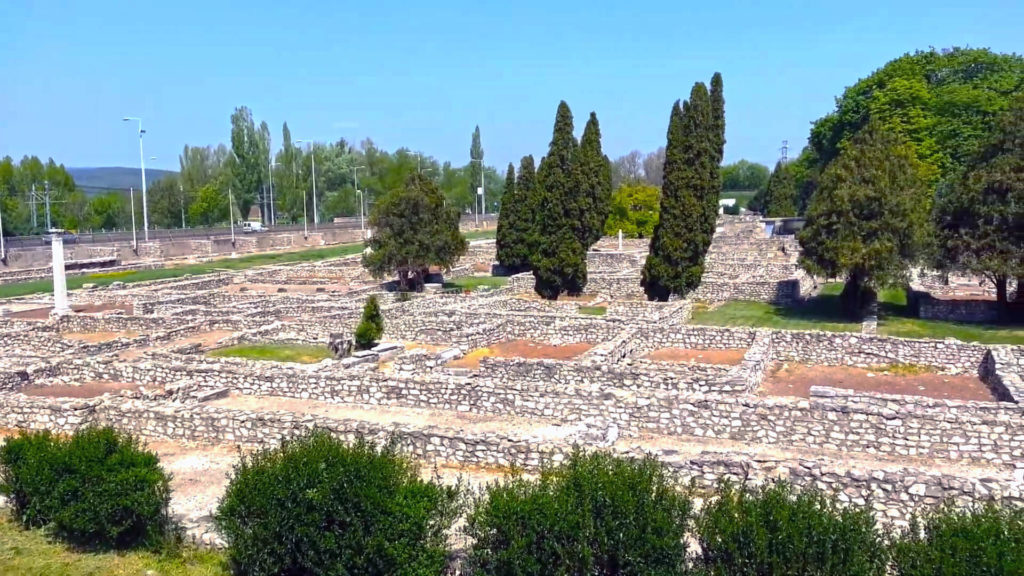Aquincum Museum and Ruins

Getting to Aquincum
Aquincum is easily accessible via public transportation from Budapest. Visitors can take the HÉV suburban railway to the Aquincum stop, which is a short walk from the archaeological park and museum.
Bus: 34, 134 and 106 from Szentlélek Square in Obuda.
Address: Budapest, Szentendrei út 135, 1031 Hungary
History of Aquincum
Aquincum was initially established as a military base or castrum for the Roman Empire in the first century AD. Around AD 41-54, a cavalry unit arrived, followed by a Roman legion of 6,000 men. The city gradually grew around the fortress and became the capital city of the Roman province of Pannonia Inferior after the administrative reform of Diocletian in AD 106.
Under Hadrian, Aquincum obtained municipal status, and under Septimius Severus, it became a Roman colony. The city had at least 30,000 inhabitants by the end of the 2nd century and covered a large area of what is now the Óbuda district of Budapest.
Throughout its history, Aquincum was the center of operations on the Roman frontier against the neighboring Iazyges and was occasionally the headquarters of emperors. However, during the middle of the 4th century, the territory of Aquincum was under constant attack from the Sarmatians from the north. The decline of the Roman Empire also affected Aquincum, and the ancient city was largely destroyed by 350 AD. Germans and the Huns invaded the region during 409 AD.
Exploring Aquincum
Today, visitors can stroll through the streets of Aquincum and observe the city’s temples, shops, houses, and thermal baths. The largest part of Aquincum was built between the second and third century and includes some impressive ruins.
Some of the most notable features of the ruins include a stone tile with a sewer grate built into it, an underground central heating system, mosaic-covered thermal baths, and a market-place. The two amphitheaters, the Aquincum Civil Amphitheater and the Aquincum Military Amphitheater, were venues for gladiatorial combats and beast fights.
However, visitors should keep in mind that Aquincum was a much larger city than what is currently visible. Currently, only a third part of the city center has been excavated.
Aquincum Museum
The Aquincum Museum features a small collection of historic Celtic and Roman artifacts. Visitors can see the statues and mosaics found on the first floor, as well as a reconstruction of the hydraulic system, Roman houses, and paintings that have been recovered on-site.
Is it Worth Visiting?
Visiting Aquincum is quite interesting, but visitors may expect more information on the various parts of the ruins. It can be challenging to navigate the site without proper signposts or guidance. However, the best part of the attraction is the ruins, so visitors should make sure that these are open before making the trip to Aquincum.
The Women of Aquincum
Aquincum is known not just for its ruins but also for the women who have led the museum and archaeological park. Klara Poczy, Paula Zsidi, and Orsolya Lang have all contributed significantly to the ongoing and widely respected program of archaeological research at Aquincum. Poczy was the first of these celebrated female museum directors, and Zsidi later succeeded her. Lang currently oversees not just the museum and the archaeological park but also the Roman-period archaeological investigations in its wider territory.
Aquincum Through the Years
Aquincum has been the center of several international gatherings of Roman archaeologists throughout the years. In 1976, the Congress of Roman Frontier Studies was held in Hungary, and attendees explored the park. Since then, many conferences have been organized by museum staff. One such conference was held to mark the 1,900th anniversary of Hadrian’s visit to the Danube provinces, focusing on that emperor’s activities in the area.
Other Roman Structures in Budapest
While Aquincum is the most notable Roman structure in Budapest, other ruins can be seen throughout the city. Contra-Aquincum, located near Aquincum, contains additional Roman structures that were the heart of the commercial life of the Pannonia province during the 2nd and 3rd centuries AD.
